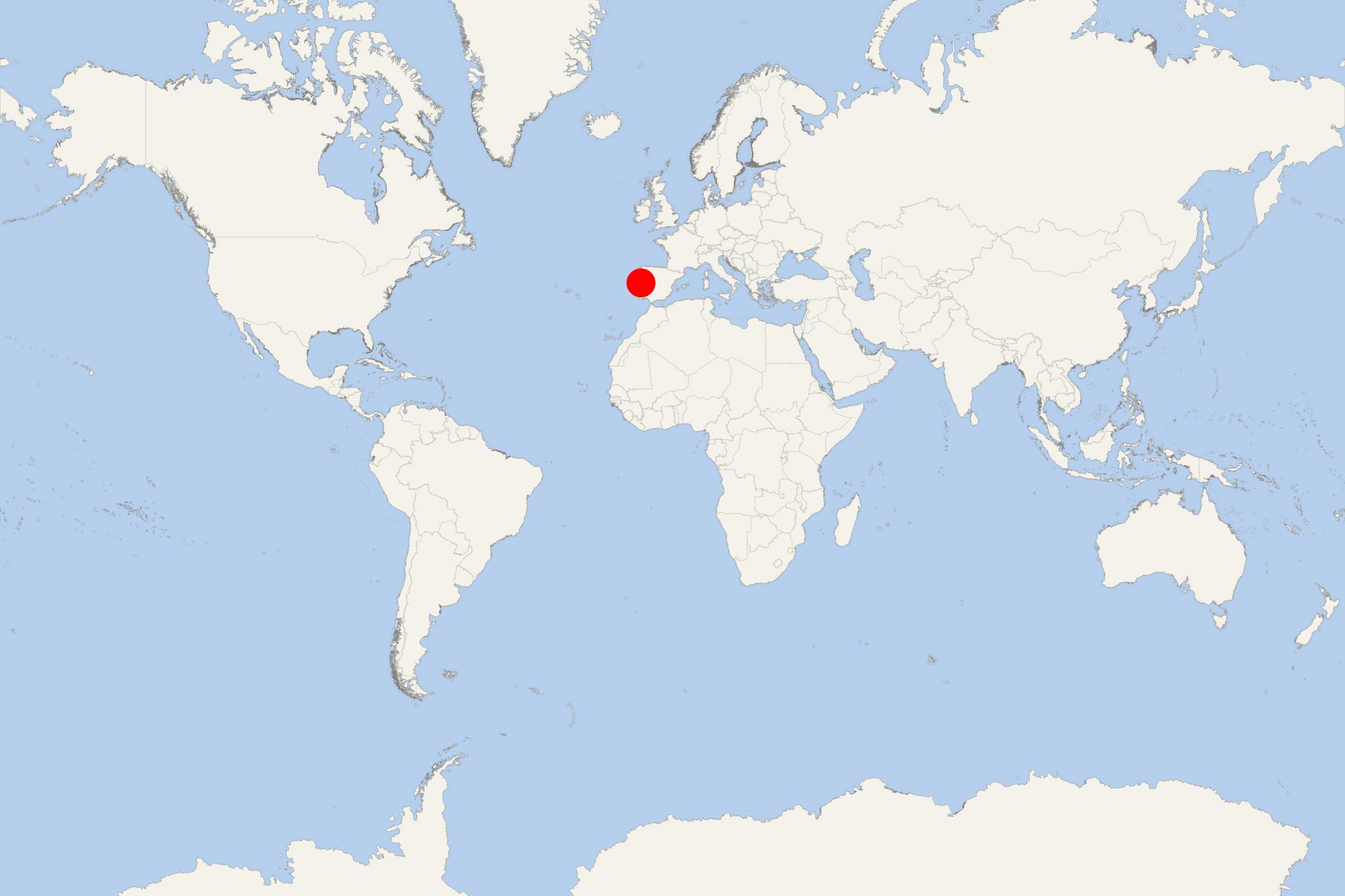Coimbra (Portugal)
Cruise Port schedule, live map, terminals, news
Region
Europe Rivers
Local Time
2025-04-20 08:27
 51°F
51°F 10.3°C

 Light breeze
Light breeze2.2 m/s
 57 °F / 14 °C
57 °F / 14 °C 45 °F / 8 °C
Port Coimbra cruise ship schedule shows timetable calendars of all arrival and departure dates by month. The port's schedule lists all ships (in links) with cruises going to or leaving from Coimbra, Portugal. To see the full itineraries (ports of call dates and arrival / departure times) and their lowest rates – just follow the corresponding ship-link.
| Day | Ship | Arrival | Departure |
|---|---|---|---|
| 18 June, 2026 Thursday |
Coimbra is a Douro River cruise destination and a major city in Portugal, with municipality land area ~320 km2 (123 mi2) and population around 140,000. By land area (~4335 km2/1674 mi2), Regiao de Coimbra/Metro Area is Portugal's fourth-largest (following Lisbon, Oporto, and Braga), grouping 20 municipalities and population around 0,5 million.
As a cruise port destination, Coimbra was included in the 2024 schedule of Tauck Travel USA with the chartered from Scylla Cruises riverboat Andorinha.
The next table shows Tauck's 12-day cruisetour itinerary "Exploring the Douro, plus Lisbon and Madrid".
| Date / Time | Port |
|---|---|
| DAY 1-2 (overnight hotel) | Departing from Lisbon |
| DAY 2 | Coimbra, Portugal (bus travel to Oporto) |
| DAY 2-4 (embarkation) | Oporto, Portugal |
| DAY 5 | Entre-os-Rios, Portugal |
| DAY 6 | Regua/Lamego, Portugal |
| 03 Jun | Folgosa, Portugal |
| DAY 7 | Pinhao/Favaios, Portugal |
| DAY 8-9 (overnight) | Pocinho, Portugal |
| DAY 9-10 (overnight) | Barca d'Alva, Portugal |
| DAY 10 (debarkation) | Vega de Terron, Spain (bus travel to Salamanca and Madrid) |
| DAY 10-12 (overnight hotel) | Arriving in Madrid, Spain |
Tauck's prices started from EUR 7290 (USD 7880/GBP 6240) per stateroom, inclusive of 7-day cruising on the Douro River, bus travel, and overnight hotels in Lisbon and Madrid.
The current-day city's economy is largely based on higher education (38000+ students), retail shopping, IT technology, health sciences, health care industry, administrative and financial services. Large companies headquartered in Coimbra include Critical Software, Ciberbit, Active Space Technologies, Feedzai, ISA Machinery, CIMPOR Souselas, Olympus Corporation, Bluepharma, BASI Laboratories, Fucoli-Somepal, major manufacturers of ceramics, food processing companies, large businesses specializing in textiles, wines, architecture design and construction, handicrafts (tapestry, pottery, porcelain).
Direct train and highway routes link Coimbra to Lisbon and Oporto.
The city is popular among its citizens and domestic tourists for its numerous nature parks and gardens, outdoor playgrounds, forests. The University of Coimbra's Botanical Garden (1772-established) is among the world's oldest.
In the 12th-13th century, Coimbra was the Kingdom of Portugal's capital city (in the period 1131-1255) but during the Middle Ages, the city declined as the monarchy's political center and evolved into a cultural center. In the 14th century, Portugal's first university (1290-established in Lisbon) was relocated to Coimbra (in 1308). The university's historical buildings and monuments are a major tourist attraction, and in 2013 was classified as a UNESCO World Heritage Site.
During the Muslim era/Moors (8th-11th centuries) Coimbra (named Qulumriyah) was the largest settlement in Northern Tagus and the principal city with population around 5,000.
In the 12th century, the Portuguese fortified the city. Portugal's most important religious institution at the time (Santa Cruz Monastery) was founded in 1131. In the 12th century also started the construction of Se Velha de Coimbra (the Old Cathedral). In 1139, Prince Afonso I Henriques The Conqueror (1106-85) declared himself King of Portugal and made Coimbra its capital.
During the Middle Ages, the city was divided (by Mondego River) into two areas - Cidade Alta/Almedina (housing the aristocracy and the clergy) and Cidade Baixa/Arrabalde (housing the merchants, artisans and workers). In the surrounding areas were built monasteries and convents.
